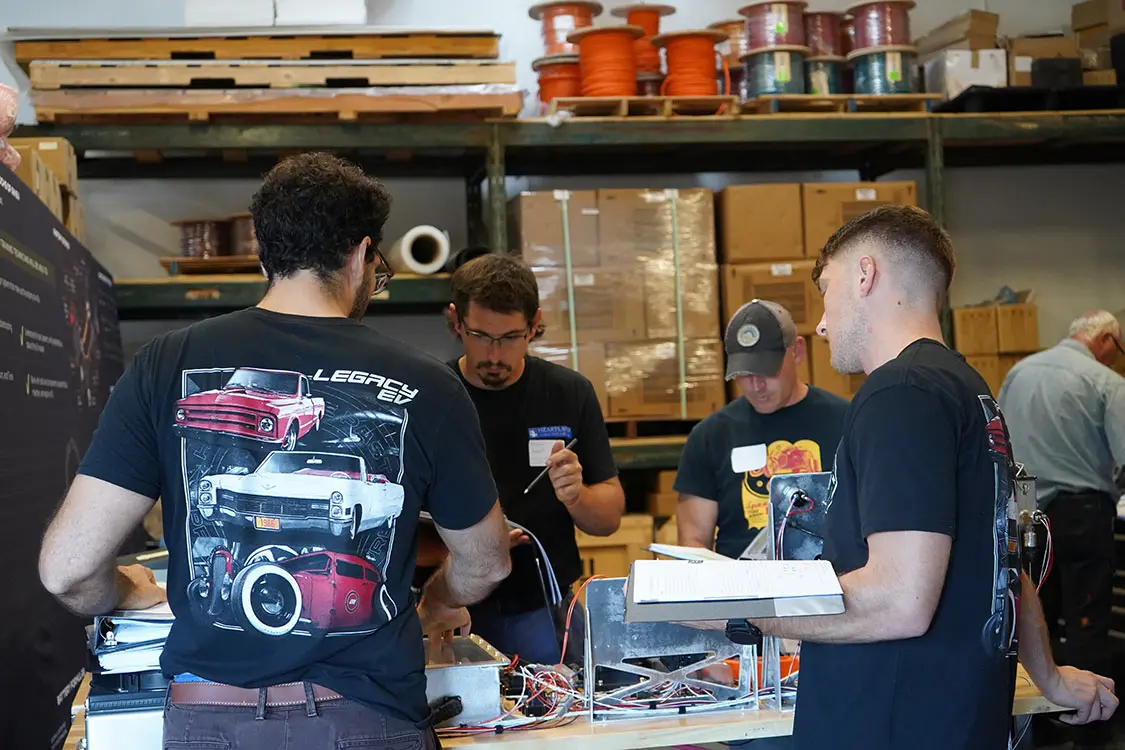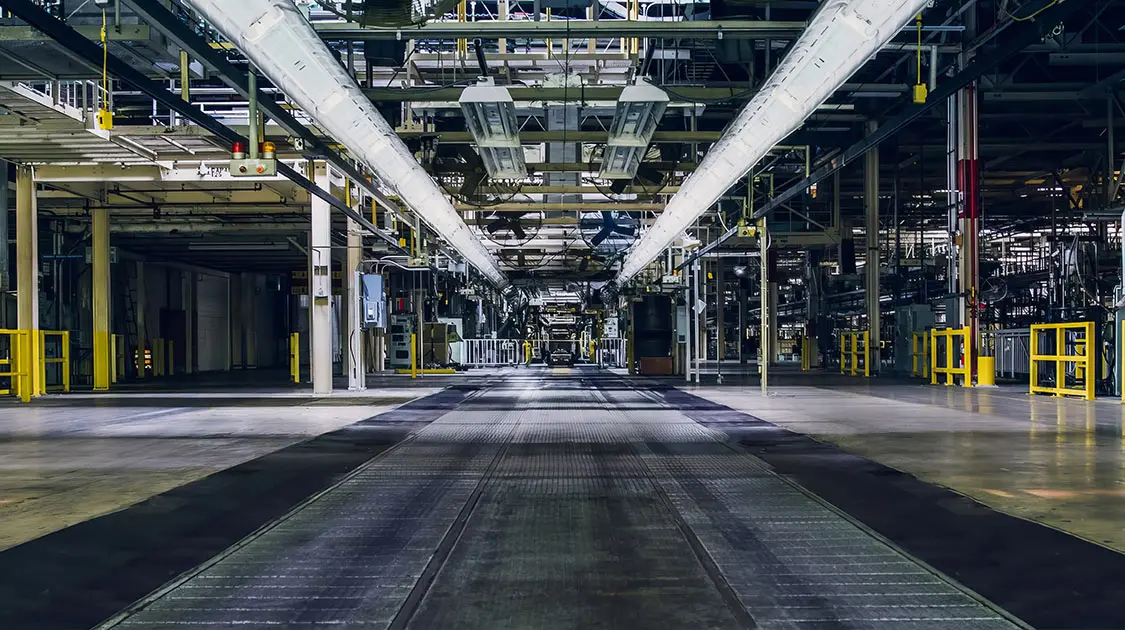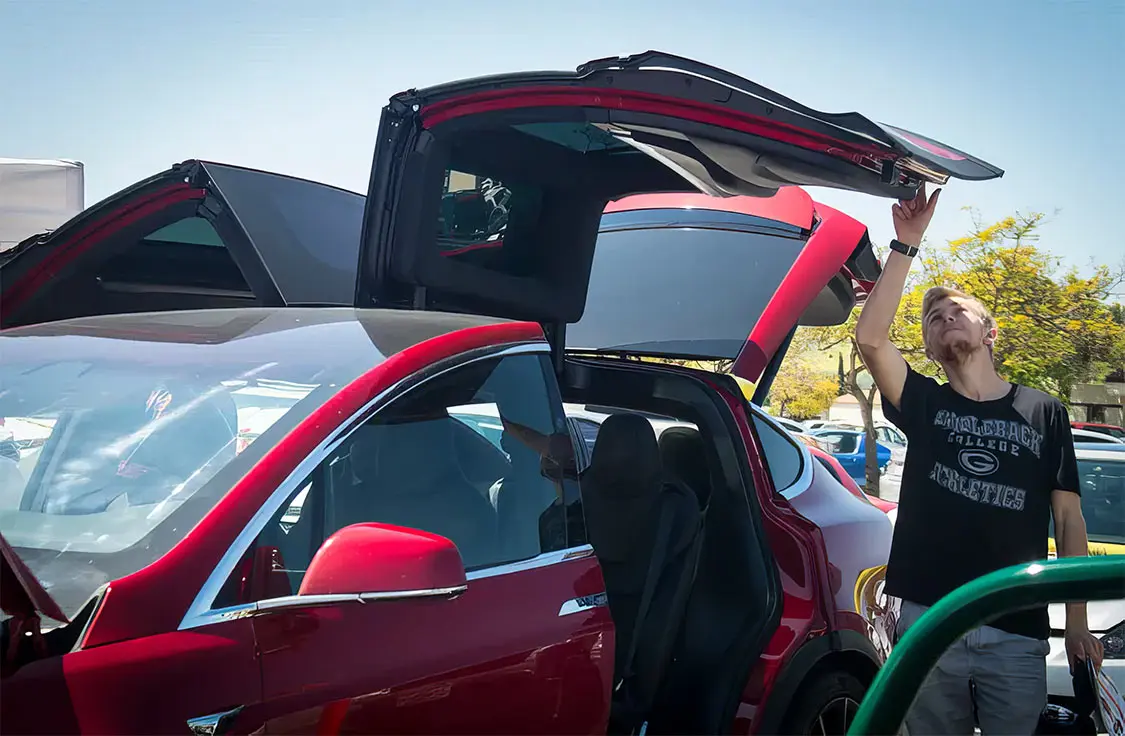 LEGACY EV
.
March 11, 2024
.
Electric Vehicle Features
LEGACY EV
.
March 11, 2024
.
Electric Vehicle Features

Photos by Legacy EV
Wow, we have all heard the stereotypes about the kind of people who go into careers in automotive service and repair, right? It is a frustrating misconception that working with our hands is somehow not a worthy career. But even with the EV industry predicting that it will create 200,000 jobs in the US by 2030 and a growing number of EVs on the road, high-paying, high-quality careers as EV technicians are sitting vacant.
So, how can we best prepare for the hockey stick-shaped growth curve of the EV industry and the jobs needed to support it?
This hands-on training goes a long way in preparing learners for successful careers in the dynamic field of e-Mobility.

It has been described as hockey stick-shape because excitement and press around the addition of alternative fuel to the auto industry has blown up, but funding and actually putting pens to paper is a slow process. An entire year has passed since our federal government started investing in EV workforce development, infrastructure, and manufacturing, but seeing that trickle down into your town takes time. However, there are a few local governments and colleges that were early e-Mobility adopters and will springboard a cultural shift in the importance of careers in the automotive industry.

And what are the two core workforce investments needed for this shift? Up-skilling your existing automotive workforce and investing in a new generation of gearheads. Think about it! Middle school robotics programs are really just creating gearheads for circuits, basic high school coding classes set you up to play with a dyno, and social media product reviewers now consider EVs another piece of tech. We are inspiring the next generation to get back to problem solving, rebuild that tech trash and make it battle, and fix up your ride to show off to others (and post for likes).
It is high time we start realizing the potential of hands-on skills, including the value of careers that just can’t be replaced by automation.


Manufacturers and colleges are contributing to this subtle shift. Rivian, for example, has partnered with Illinois Governor JB Pritzker to build a $7.5 million dollar Electric Vehicle-Energy Storage Manufacturing Training Academy at Heartland College in a small town called Normal. Students can earn an Associates of Applied Science degree and qualify for an interview for one of Rivian’s 4,000 jobs needed in its new nearby facility.
States like California are going even further to refrain from lumping it into an EV-only category and are instead offering “alternative fuel” courses. At Saddleback College in Mission Viejo, students can become Alternative Fuel Specialists, gaining knowledge from Legacy EV training benches to learn the fundamentals of hybrid, EV, and emerging alternative fuels. Raj Dhillon, senior lab technician at Saddleback College, remarks on his school’s use of an EV training bench for hands-on learning in the classroom.


“It offers a comprehensive, product-agnostic learning experience, perfectly suited for [those] seeking to instill in their students a solid understanding of EV fundamentals,” he says. “This hands-on training goes a long way in preparing learners for successful careers in the dynamic field of e-Mobility.”
Then, right outside of Motor City, Ontario, Canada ranks number two in vehicle production behind Michigan and has built entire EV programming for their automotive students. At St. Clair College in Windsor, Ontario, students can earn an industry credential as an Electric Drive Technician, and then go on to complete an apprenticeship in the field or continue their education to earn an EV Technician degree.


As these high-need positions sit vacant, colleges and manufacturers have put considerable investments into promoting these valuable careers and supporting training for diverse individuals, like Justice40 communities and women. In fact, according to MarketSource, only 1.5% of the technicians currently employed are women—no doubt caused by the cultural stereotype around auto techs and working with your hands. It is high time we start realizing the potential of hands-on skills, including the value of careers that just can’t be replaced by automation.
Is your school supporting hands-on innovation and problem solving? Is your town investing in e-Mobility workforce pipelines? We’d love to hear from you! Tell us your story for a chance to be featured in EV Builder’s Guide.
Share Link